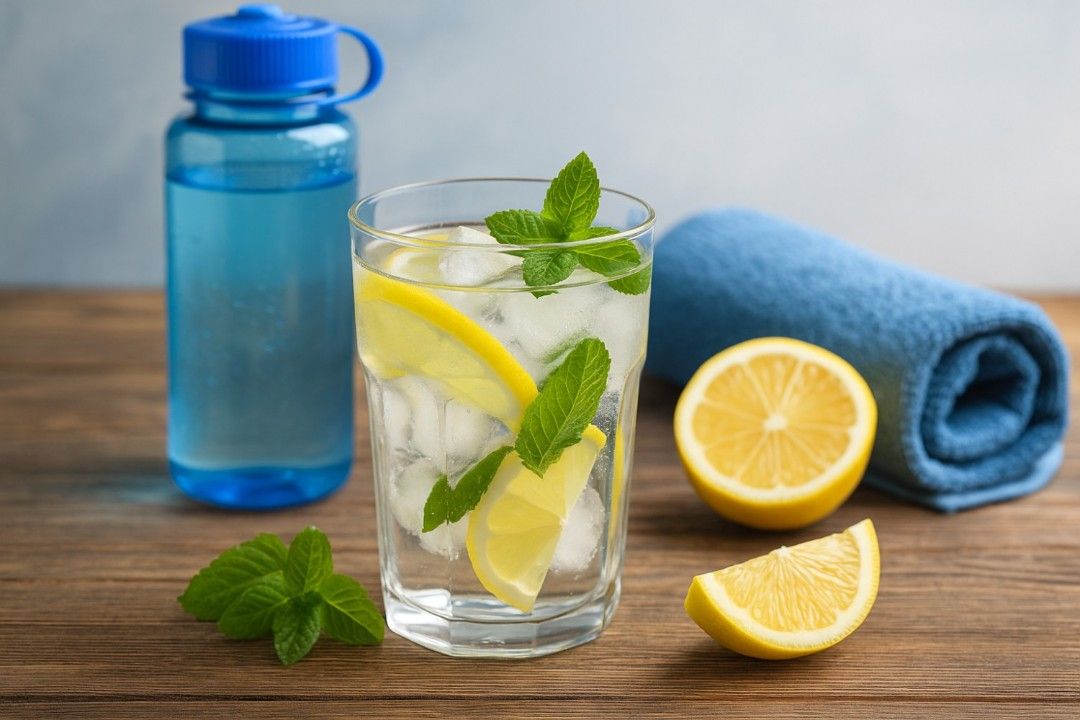Hydration quietly powers energy, focus, digestion, temperature control, and long‑term health. Yet daily routines, travel, and busy workdays often derail consistent fluid intake. Small, practical changes make staying hydrated simpler than willpower alone—especially when habits, environments, and choices do the heavy lifting. From morning rituals and flavorful infusions to smart use of electrolytes, cooling strategies, and safety tips, these evidence‑based hacks help hydration feel automatic, sustainable, and enjoyable across seasons and schedules.
1. Morning Hydration Jumpstart
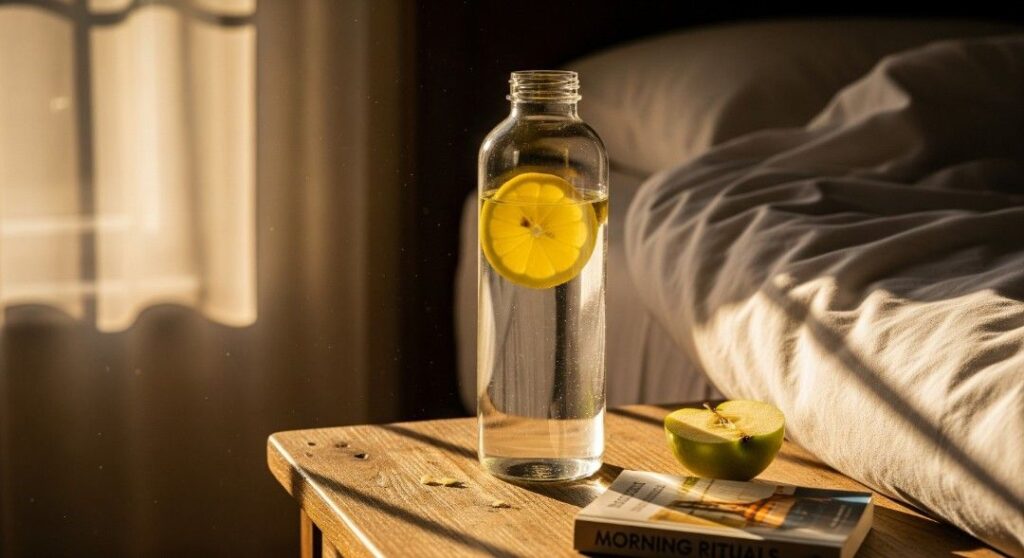
Morning hydration primes energy, mood, and digestion after overnight fluid loss. A filled bedside bottle reduces friction and delivers an easy first win. Add lemon, a splash of unsweetened electrolyte mix, or room‑temperature water if cold feels harsh. Keep the bottle visible while preparing breakfast to reinforce the cue.
Pair the habit with making the bed or starting coffee for consistency. Small, steady sips prevent stomach slosh and help rehydrate gently. Set out the bottle before bedtime as a simple reminder. Public health guidance prioritizes plain water over sugary alternatives for daily hydration and overall health. (source).
2. Habit Stack Drinking Cues
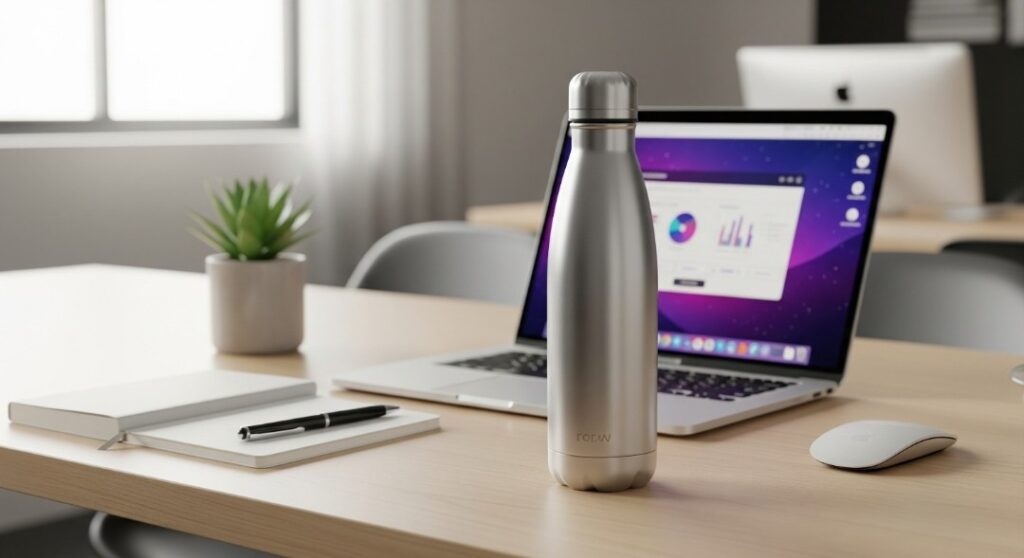
Habit design turns hydration into autopilot. Attach drinking to existing routines: after brushing teeth, before meetings, upon returning from errands. Use brief phone alarms at first, then taper as muscle memory forms. Place bottles at frictionless touchpoints—desk, bag, car cupholder, gym locker—to reduce forgetting.
Track streaks on a calendar; visible progress sustains motivation better than vague goals. When schedules shift, re‑anchor cues to stable events like meals and wake time. Small, consistent sips beat sporadic gulps for steadier hydration and fewer bathroom trips. Behavioral research supports cue‑based habit formation.
3. Naturally Flavor Water
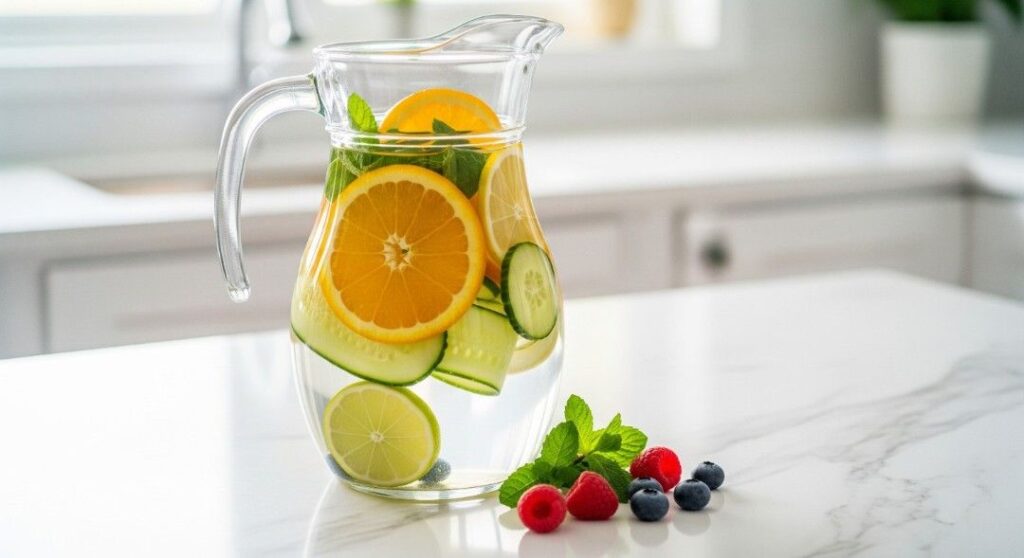
Flavor upgrades increase enjoyment without excess sugar. Infuse water with citrus slices, cucumber, mint, basil, or berries; chill for two hours to deepen taste. In cooler months, try cinnamon sticks with orange for comforting spice. Rotate combinations to prevent palate fatigue and maintain adherence.
Sparkling water can satisfy soda cravings when fizz is desired; choose unsweetened varieties to avoid added sugars. Keep portions reasonable to limit natural sugars from fruit. A reusable infuser bottle streamlines prep while cutting plastic waste. Public health guidance endorses flavoring water with fruit and herbs.
4. Choose Better Beverages
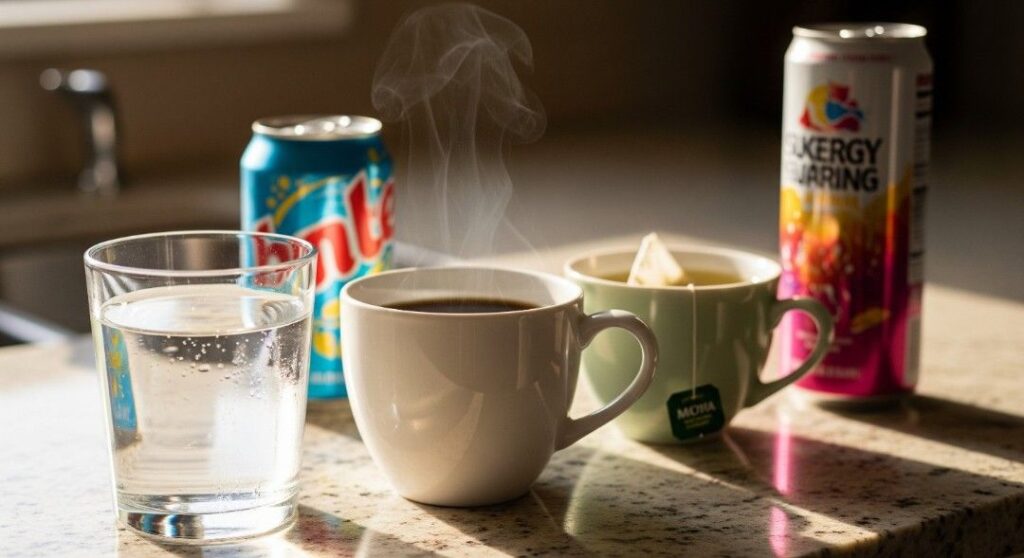
Smarter beverage choices support long‑term health. Prioritize plain water, unsweetened tea, and coffee; limit sugar‑sweetened beverages linked to weight gain, type 2 diabetes, and heart disease. Compare labels carefully—some “sports” or “energy” drinks rival soda for sugar. Diet drinks reduce sugar yet may maintain a preference for sweetness; consider them transitional tools.
Milk and fortified alternatives add nutrients but contribute calories; fit them into overall intake. Set a default: water for thirst, nutrient‑dense drinks with meals. Keep a refillable bottle accessible to make the default effortless. Authoritative nutrition guidance emphasizes water as the go‑to drink. (source).
5. Use Electrolytes Strategically
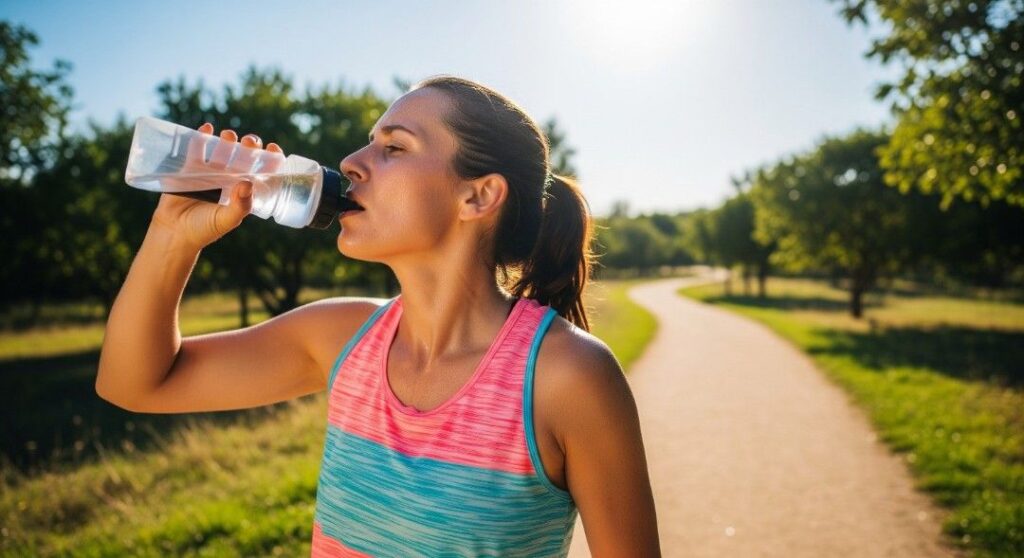
Electrolyte drinks are situational tools, not everyday necessities. During prolonged sweating, high heat, or gastrointestinal illness, sodium and carbohydrates aid absorption and retention. For desk days and light activity, water generally suffices. Choose formulations with modest sugar (about 4–6%) for endurance sessions; higher concentrations can cause stomach upset.
Add electrolytes when sweat losses are significant or urine remains clear despite frequent intake. Workers in hot environments benefit from scheduled water, rest, and shade, with electrolyte beverages when sweating heavily. Occupational health guidance outlines when sports drinks are appropriate during heat exposure.
6. Eat Hydrating Foods
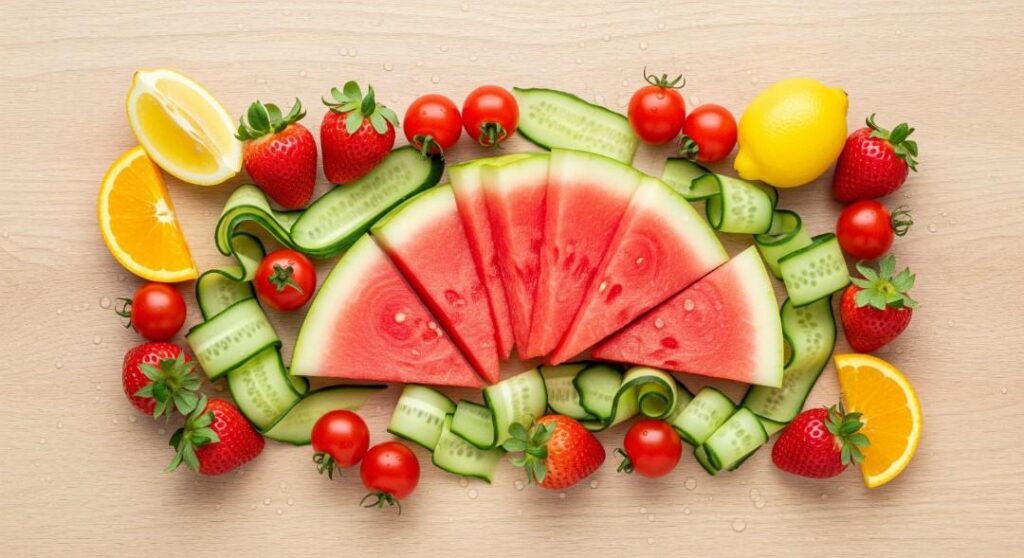
Hydrating foods quietly cover roughly one‑fifth of daily fluid intake. Prioritize water‑rich produce—cucumbers, lettuce, tomatoes, melon, citrus, strawberries—and broth‑based soups. Yogurt and oatmeal also contribute because they contain or absorb water. Build plates that pair fluid‑dense foods with protein and fiber to maintain satiety.
Soups or salads at lunch help on hectic days when drinking lags. During travel, choose fruit cups over chips to boost hydration without excessive sodium. Keep washed produce visible in the refrigerator to prompt easy choices. Nutrition experts note that about 20% of hydration typically comes from foods in balanced diets. (source).
7. Track Intake Smartly
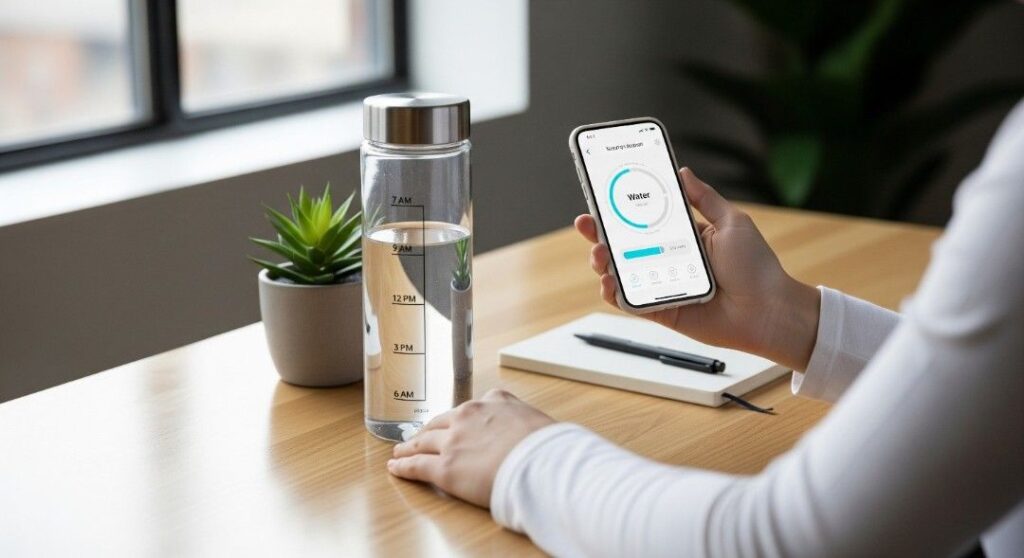
Tracking intake turns guesswork into insight. Use a marked bottle with hourly guides or minimal phone widgets that log finished volumes. Calibrate targets to climate, activity, and pregnancy or breastfeeding status rather than fixed numbers. Compare bathroom frequency and urine color for practical feedback.
If intake clusters late, move cues earlier—breakfast, mid‑morning, mid‑afternoon—to limit nighttime awakenings. Weekly reviews reveal patterns: meetings, commuting, and workouts often pinch opportunities. Keep water within arm’s reach during focus blocks to nudge consistency. Public health guidance stresses regular drinking and monitoring for dehydration signs, including dark urine and dizziness.
8. Keep Drinks Cool in Heat
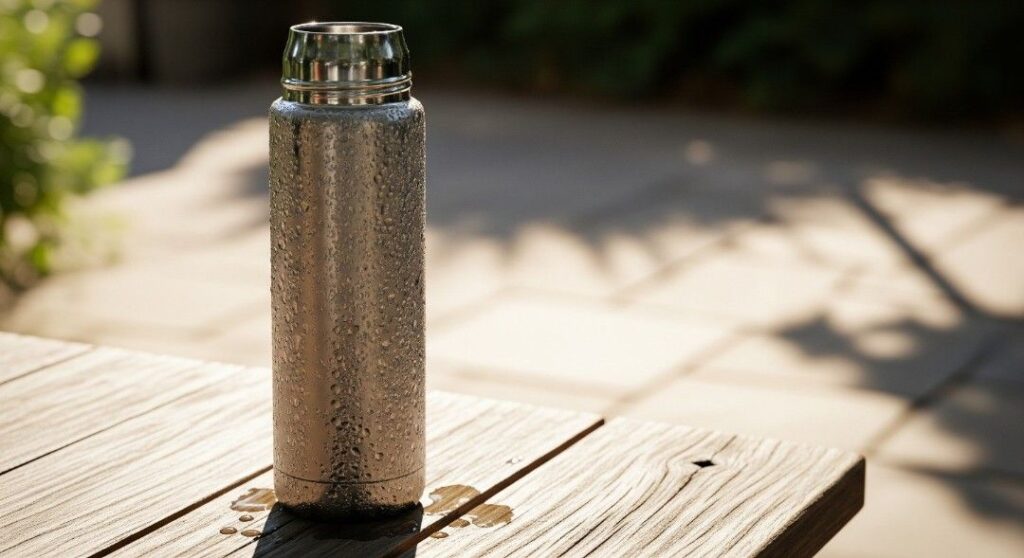
Cooler fluids often improve palatability and drinking rate during heat exposure. For outdoor work or intense exercise, aim for cool—not icy—beverages to reduce gastric distress while enhancing comfort. Insulated bottles and ice sleeves sustain temperature over hours. Flavoring with a pinch of salt and citrus may further encourage intake when sweat losses mount.
Employers should provide shade and cooling breaks to complement hydration, especially for new or returning workers. Store spare ice packs in the freezer for quick bottle refills. Occupational safety guidance specifically recommends offering cool water in hot conditions to prevent heat illness. (source).
9. Pre, During, and Post‑Workout Plan
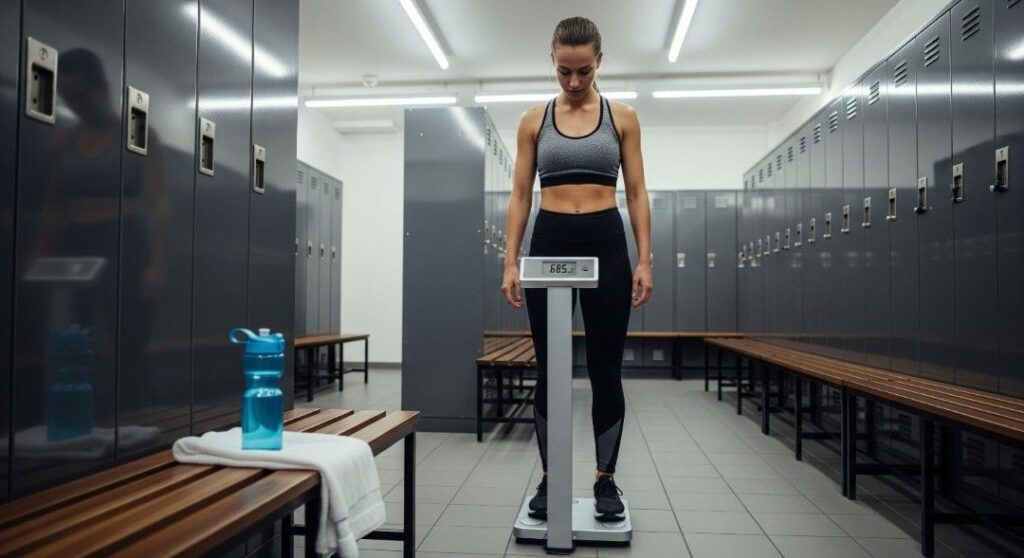
Pre‑hydrate before activity, sip during, and replace losses afterward. A practical rule: begin well‑hydrated, drink to thirst during most workouts, and use body‑weight change to guide post‑exercise replacement. For sessions longer than an hour, consider electrolytes and small amounts of carbohydrate to sustain performance and reduce cramps.
Avoid overdrinking, which risks hyponatremia. Weighing before and after long efforts individualizes plans. Endurance athletes benefit from rehearsal on training days, not race day. Carry a scale in the car for field practices to learn sweat rates. Authoritative intake references describe hydration needs alongside sodium and potassium balance during prolonged exertion.
10. Make Caffeine Work for Hydration
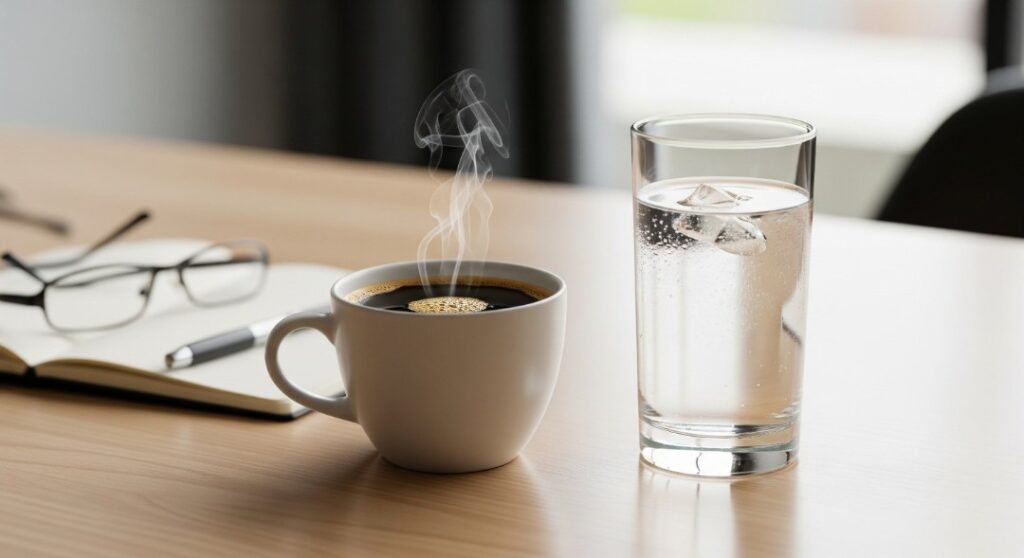
Caffeine’s diuretic reputation is overstated at customary intakes. Evidence shows moderate coffee and tea contribute to daily hydration without causing meaningful fluid loss in habitual consumers. Still, large doses late in the day may prompt awakenings. Pair caffeinated beverages with water across the day to manage total intake and acidity.
Those sensitive to jitters can choose half‑caf or brew lighter. Remember that many bottled coffees and teas hide significant sugar; check labels. Consider decaf after lunch to protect sleep quality. Reputable medical guidance affirms caffeinated drinks can count toward fluid goals for most adults. (source).
11. Balance Alcohol with Water
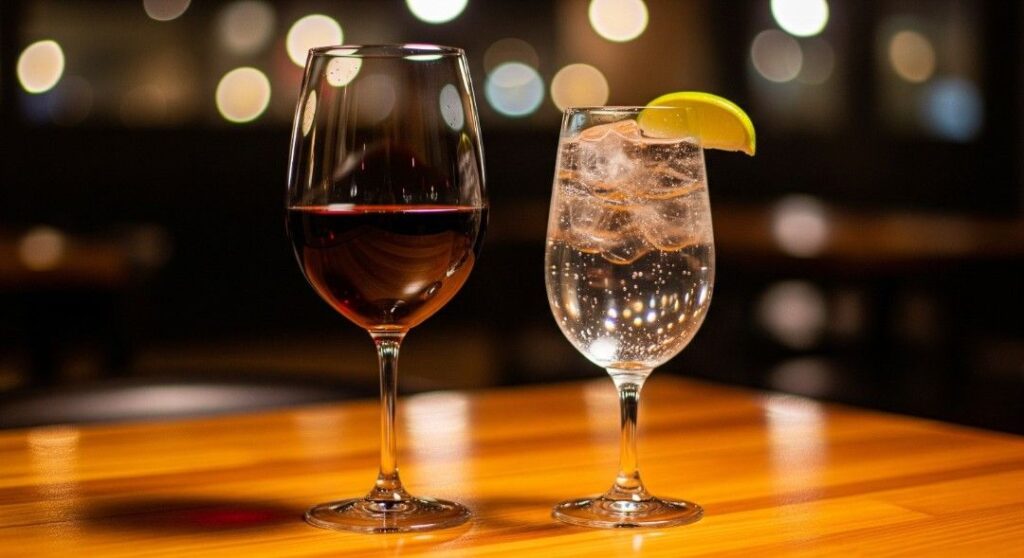
Alcohol increases urine output by suppressing vasopressin, raising dehydration risk and next‑day fatigue. Alternate each alcoholic drink with a glass of water, and favor lower‑ABV choices to reduce total diuresis. Eat salty snacks or a balanced meal to slow absorption and support electrolyte balance. Avoid high‑sugar mixers that compound headaches.
Hydrate before bed, but avoid overdrinking that disrupts sleep. Plan a nonalcoholic closer—sparkling water with lime—so the night ends hydrated. Pace servings and set a drink limit before social events. Federal health resources explain alcohol’s diuretic effects and hangover physiology in accessible terms.
12. Replace Sodium and Potassium Wisely

Electrolyte balance matters when sweat losses are heavy. Sodium helps retain fluid; potassium supports nerve signaling and muscle function. During long, hot efforts, use sports drinks or salty foods rather than plain water alone to reduce hyponatremia risk. For everyday meals, season to taste and include produce, legumes, and dairy for potassium.
People with hypertension, kidney disease, or on diuretics need individualized advice from clinicians. Carry salty snacks like pretzels on long hikes to simplify replacement. Occupational safety guidance recommends electrolyte beverages during prolonged, heavy sweating alongside water, rest, and shade.
13. Safer Water and Filtration Basics
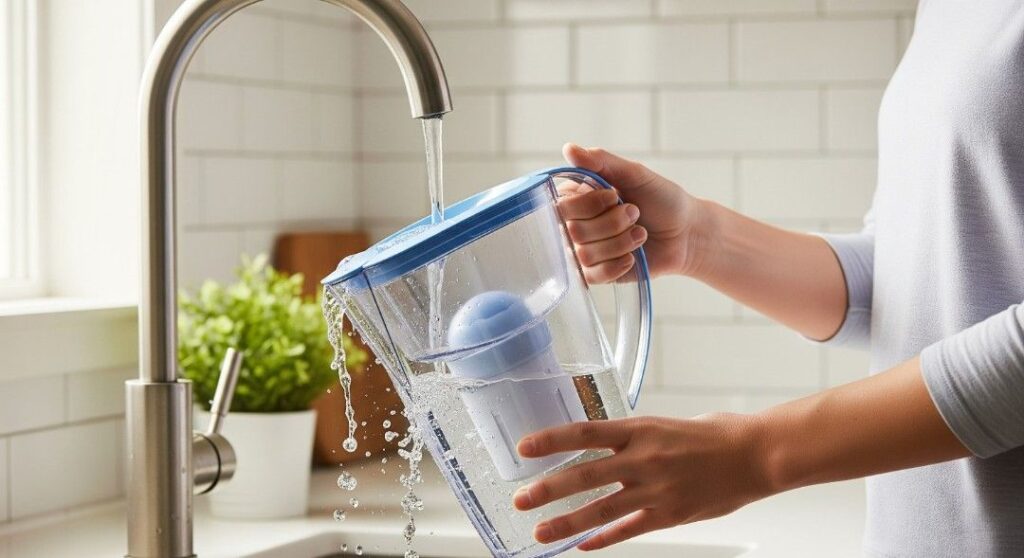
Tap water in many regions meets strict safety standards, and utilities publish annual quality reports. A certified filter can improve taste, reduce lead, or remove specific contaminants; match the cartridge to the target using NSF/ANSI certifications. Bottled water is not inherently safer and increases cost and plastic waste.
Keep reusable bottles clean by washing daily and air‑drying. During outages or floods, follow boil‑water notices and use sealed sources. Check local reports for lead service lines and planned infrastructure upgrades. Environmental regulators provide guidance on public drinking water systems, testing, and consumer protections. (source).
14. Travel and Hot‑Weather Hydration
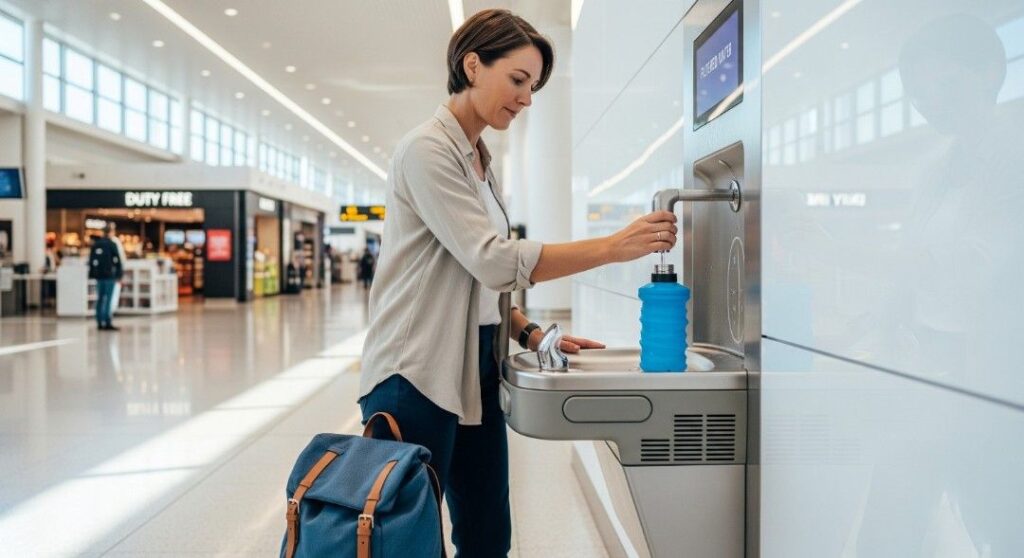
Travel and hot weather require proactive planning. Pack a collapsible bottle, then refill at fountains after security. Where tap water is unsafe, choose factory‑sealed beverages, boiled drinks like tea, or properly treated water. Schedule outdoor activity early or late to avoid peak heat, and seek shade midday.
Electrolytes help during exertion in hot, humid climates. Rinse fruit with safe water and avoid ice from unknown sources. Carry purification tablets or a compact filter for backcountry routes. Official travel advisories outline water safety, treatment methods, and heat‑illness prevention strategies for common destinations. (source).
15. Spot Dehydration Early
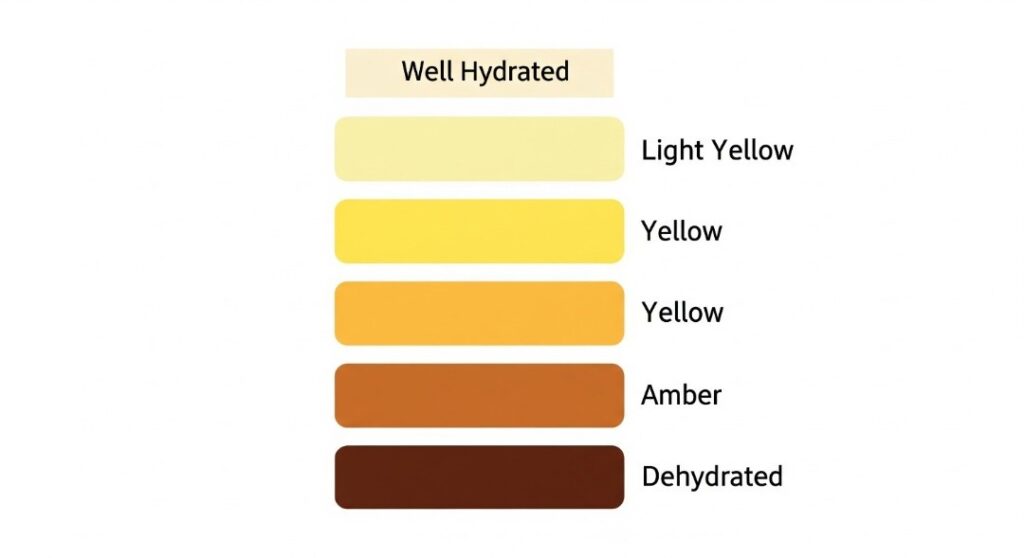
Recognizing early dehydration prevents dips in energy and attention. Warning signs include thirst, dry mouth, fatigue, dizziness, headache, and dark yellow urine; severe cases may involve confusion or rapid heartbeat. Use the urine‑color chart heuristic: pale straw suggests adequate hydration, apple‑juice tones signal under‑hydration.
Older adults and young children are particularly vulnerable during illness or heat. Oral rehydration solutions help when vomiting or diarrhea accelerate fluid loss. Seek medical care for persistent symptoms. Carry a small ORS packet in the travel kit for emergencies. Public health guidance details symptoms, risk groups, and practical prevention steps. (source).

